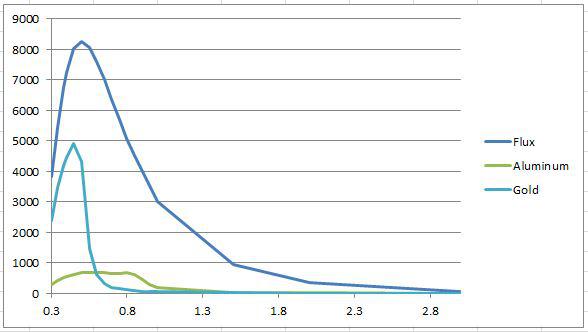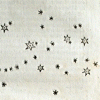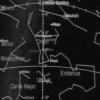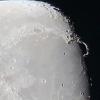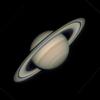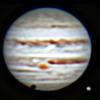I present you some ideas to realize a self made coronograph…
Best regards !
In a few decades, the progress brought on instruments intended for the observation of the sky was very importants.
Telescopes, glasses and sensors of images benefited from a remarkable and very fast technological breakthrough.
These instruments did not practically evolve so much its design of origin is completed.
It is about the coronograph invented by Bernard LYOT at the beginning of 1930 and finalized in the Pic du Midi observatory.
An instrument allowing to create artificially the eclipses of sun.
The analysis of the solar corona and the follow-up of protuberances becomes then possible except the total eclipses so rare …
When I discovered for the first time, in the Peak, the images which these instruments could offer, I decided that sooner or later I ‘ll have one …
Furthermore, the projection of the movie " the flames of the sun " aroused in me a real passion as for the daily follow-up of the activity of our star.
By having frequenting the most experienced amateurs on the solar photographic techniques such Jean DRAGESCO, Jean Marie ROQUES and François ROUVIERE, to which go all my thanks, my passion could be only more fascinating.
Unfortunately, the price of these instruments very quickly turned out to be an obstacle.
What's to be done otherwise minimize these high prices by building the whole instrument.
Later wall up reflections, I thus decided in 1999 (the eclipse of August 11th being for nothing there) to think about the plans of a 150 mm coronograph.
It is true that the diameter of this instrument can seem conceited with regard to the quality of pretty poor air in low valley of the Rhône …
Having already to my credit several mirrors of telescopes Newton of diameter going from 200 mm to 620 mm, of openings included between 3.5 and 6, as well as the realization completes several Schmidt, the work of these single lenses did not frighten me.
The discussions with the renowned opticians allowed me to continue…
Realizations:
A: The optics
2 lenses result from Corning or Schott, they are borosilicate BSCb 1664 or BK 7, one of the most transparent glasses.
We can also cut them in the red colored glass. (Ref Schott: RG 610 or 630 with 1.55
- The first one has one diameter ( D ) of optical 148 mm for a 15 mm thickness (BK7)
Its F/D = 15. (Choose an opening included between 15 and 20 as well as a good thickness)
Both faces were raised with a precision of the order of the micron controlled with a very precise micrometer.
The radius of curvature ( R ), very weak, is reckoned in the following way:
R = F x ( n-1 )
F = Focal to obtain n = refractive index of the borosilicate 1664 is 1.51680
R = 2250 x 0.51680 1162.8 mm
The arrow is thus of: f = D ² / 8R = 2.42 mm (coro 150 mm F/15)
At the end of polishing, a tool in crown centered on the zone 0.7 will make slow races to create a lightly asphérical lens.
- The second lens (called lens of field) is much more difficult to realize that the first one(night) because smaller and more open.
She too, must be surfaced in the micron before being cut.
His(Her,Its) diameter (65 mm) is rather important for having the biggest possible field, its opening is 2.15 (raw(gross) drilled glass BK 7)
A hole of 5 mm a summer realized by the company(society) before cutting the lens, what avoids the breakage at the end of polishing …
The work of size is rather painful, because of the very pronounced curvature and quite as the main lens, it is necessary the asphériser with a tool in crown.
* To note that we can find in the army stocks, filters for aerial photo (diameter 95 mm.)
They are filters colored glass parallel plans in the mass and of thickness 8 mm.
The red color has to correspond to filters Schott RG 610 or 630.
They more already rose there in magnificent supports.
It is excellent frontal lenses which we can realise and polish in 3 hours …
They stop well the influx of heat and the cone is subjected only to a temperature of 75 °C...
- The cone to occultor must be turned in 45 ° in a hard and reflecting material: stainless steel, ideal silver (aluminium not very good)
Its diameter must be slightly lower than the diameter of the sun obtained through the main lens, during the summery period, date when our star presents the smallest visible diameter.
- The solar disk occultor which will really hide the solar diameter. (21 mm for the coronograph of 150 mm and 14 mm for that of the 90 mm)
This one is a simple slice turned in brass sliding on the handle of the cone and held by a small ring, so as to be changed according to the seasons.
The slice is polished very slightly in the sandpaper P1200.
It is good to calibrate over 1 year the various diameters of our star and to realize env. 6 - 8 occultors whose diameter is increased by some hundredth of mm of a way to mask well the solar diameter.
- To end an achromatic doublet (called objective of transfer) the focal of which is adapted to the diameter of the resultant image (image forming on the sensor) is behind the lens of field, by moving it slightly we can make vary the diameter of the resultant image.
In the case of the coronograph of 150 mm, in my case, diameter 30 mm focal 100 mm.
- A leaky slice or a small diaphragm got back on an old microscope allow to limit the excess of light live as a parasite(cause interference); this diaphragm is placed just before the doublet.
- And then there is a key element of the coronograph: H-alpha filter.
These filters are centered on the line H-alpha at 656.29 nm.
Their bandwidth must be included between 4 and 10 Angström.
Beyond it is dangerous for eyes, on this side the coronograph does not justify itself any more.
Establishments Lot Oriel and Mlles Griot markets these filters the prices of which are approximately situated in 3000 euros H.T. (sorry…!)
The achromatic doublets are also available on it.
Important: the filter Hour-alpha must be maintained shielded from the humidity and from the dust during the periods of inactivity.
B: The tube
He can be round or squared; the simplest solution being the round tube.
The square tube must be perfectly manufactured if we want to preserve the alignment of the optical axis with all the parts which must be risen and centered on small strictly perpendicular drawers in the tube.
The used materials can be the wood, the carbon, the aluminum, the bakelised paper…
Always in one concerns of economy, we can find stocks of tubes in an unbeatable price.
These cardboard tubes are thermically neutral, of thickness 6 mm, we can thus cut, drill, tap and bring them all the treatments which we want.
Besides they are long (4 m), rather light and of variable diameters. (Between 80 and 140 mm)
It is the tubes which serve to roll up carpets... (It was necessary to think of it!)
They are available in the hypermarkets of do-it-yourself and carpets shops etc. …
They present the enormous advantage to center all the optical parts and to fix, or to move, all the elements of the coronograph with an extreme precision.
Their two extremities must be raised and perpendicular in the optical axis.
Several windows allow to reach the various elements of the coronograph.
The inside is painted in matt black and the outside can be treated with 2 or 3 coats of linseed oil + siccative then covered with a coat of resin polyester.
The set is sanded then minutely then paints with 2 coats of brilliant white paint.
- The support of the front lens is turned inaluminum or some hard wood with a mattering game not to force the lens held with 3 skates of cork at 120 °.
To think of adding one adorns light 20 cms long env. constituted by an aluminum box.
The inside is painted in matt black.
It is very practical, we have in more the lid …
One focuser of 50.8 mm is installed on a deck which can move with regard the image so as to center, or move away from the center, the sensor during important eruptions.
- For the focus, which is long to come, to F/D = 25, I recommend quite particularly a focuser with a running of 40 mm env.
If possible, the digital sensor must be preceded by an optic (filp mirror) allowing to visualize the image of a protuberance, or a whole sun, on a clear glass provided with an engraved mark.
- The part diaphragm, achromatic doublet and filter can hold in a tube 30 mm long and has to settle or come out very quickly so as to put the filter shielded from the humidity.
C: Regulations and use:
As all the instruments, the coronograph accept no carelessness.
- If the tube is very perpendicular in the optical axis, the keg can be fixed: we rely on the mechanics …
- The part lens of field / cone to occultor is maintained by PVC muff of 100mm.
- The second muff(wing) supports(bears), in its center, the fixation(binding) of the set(group) diaphragm / achromatic doublet / filter.
These 2 muffs (wings) slide inside the tube with a very small set play so as to preserve the alignment of the optical axis.
(Possibility of rectifying muffs)
A stalk thread by 5 allows to adjust the solar disk occulteur on the home of the main lens; its length is 50 mm.
The distance between solar disk occulteur / lens of field is 30 mm.
- The filter Hour-alpha normally rose with a light slope.
We can then make it turn in its location so as to obtain the maximal contrast on protuberances and minimize reflections.
If we work in 24 x 36 or in webcam, it is interesting to possess 2 achromatic doublets of focal different so as to enlarge certain protuberances or then to have the whole sun.
- The focus obtains in the following way:
It is necessary, with an ocular, to finalize on protuberances and to bring the solar disk occultor in the optimal point of neatness.
It is not very obvious because the eye rather tends to focus on protuberances, so much the show is fascinating and not on the solar disk occultor.
All the usual precautions are to be respected because the temperature of the cone quickly rises to more than 300 ° and the influx of heat can be fatal in the filter and in the eyes if the sun is not completely darkened.
Attention on gusts of wind …
Conclusion:
When the seeing is good, rather in the morning, the show is extremely beautiful and we sometimes take ourselves for these pioneers of the solar energy, installed in of dilapidated monitoring observatories in meadows of 3000 m of height.
After the construction of 5 coronographes of diameters included between 90 and 150 mm my passion of the sun is always so fascinating …
It is necessary to operate with "coronal" pure, said heavens, because the slightest mist of height is harmful to the contrast of the images.
Furthermore, the optics of the coronograph must be impeccable.
The wealth, the speed of evolution, the diversity of protuberances and spicules always surprise us …
Magnetic buckles appear, lightning and brilliant eruptions come to saturate image receivers, in brief a show in perpetual change.
Our eye gives way then on these majestic eruptions which seem to float over the day star as so many firebirds.
Philippe TOSI
font lens 150 mm

image of solar disk behind red front lens 95 mm (shott RG 610)

cone and occultor slice

coronograph 150 mm and 90 mm on C.14

here an image realised with the 150 mm one










